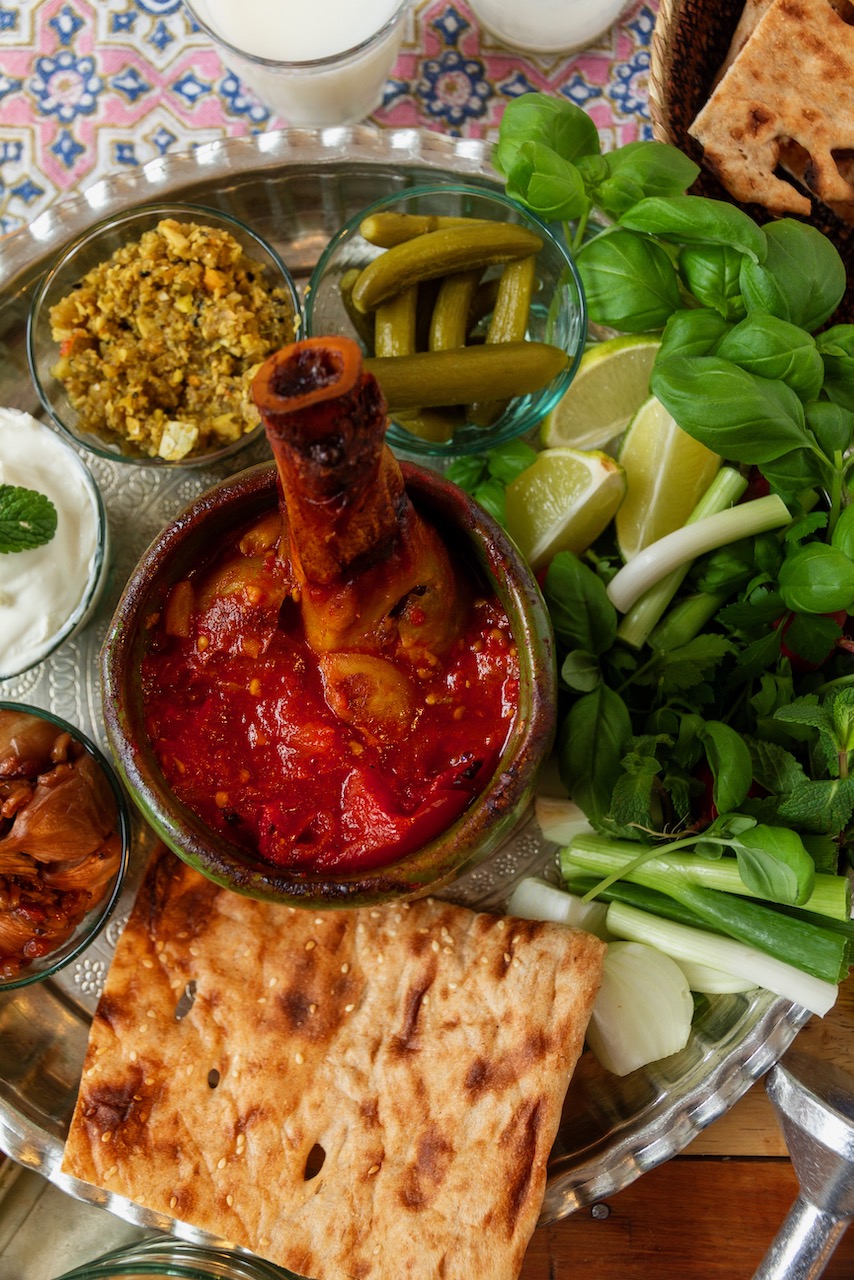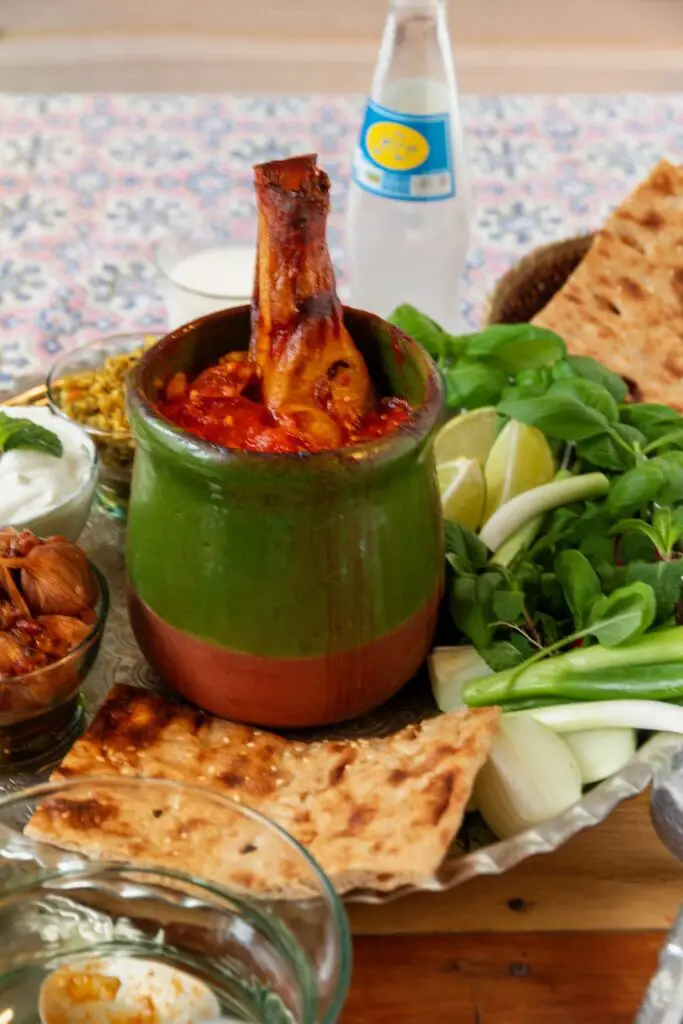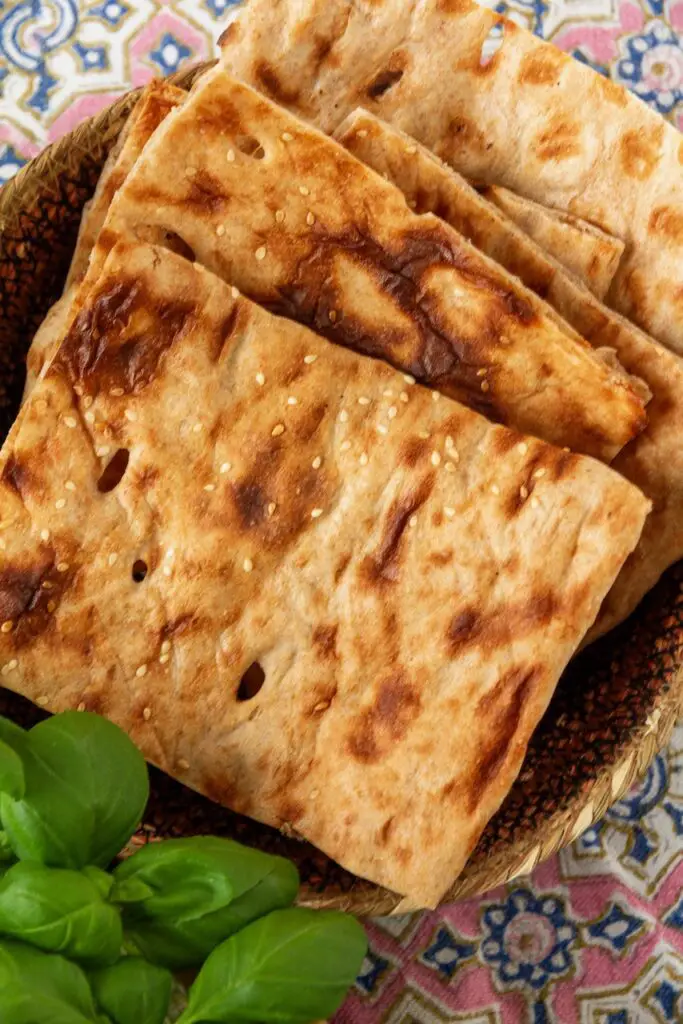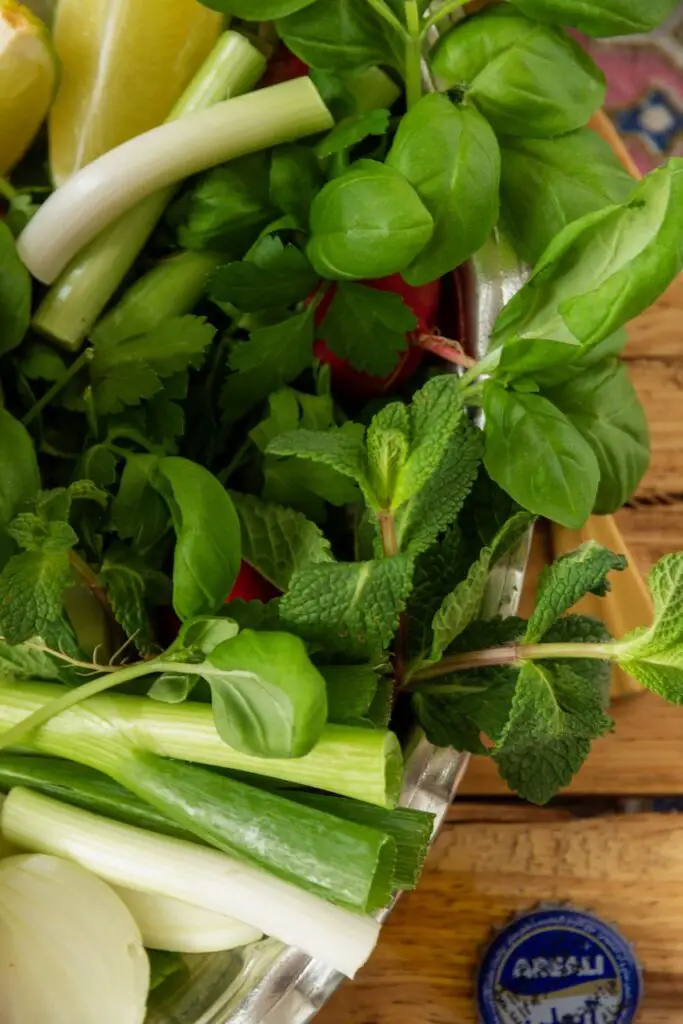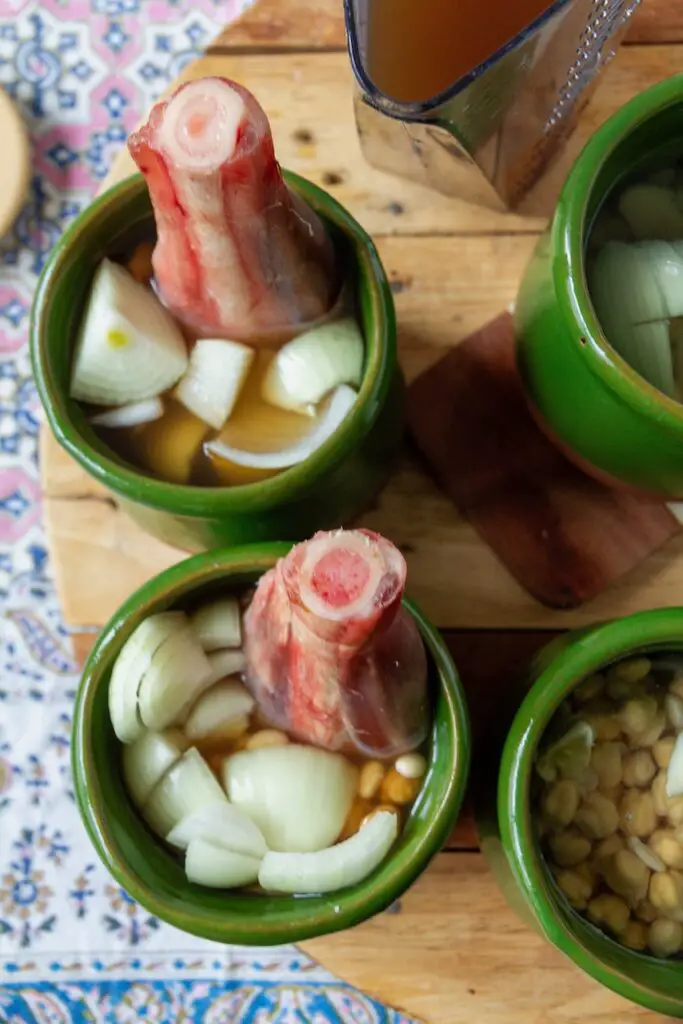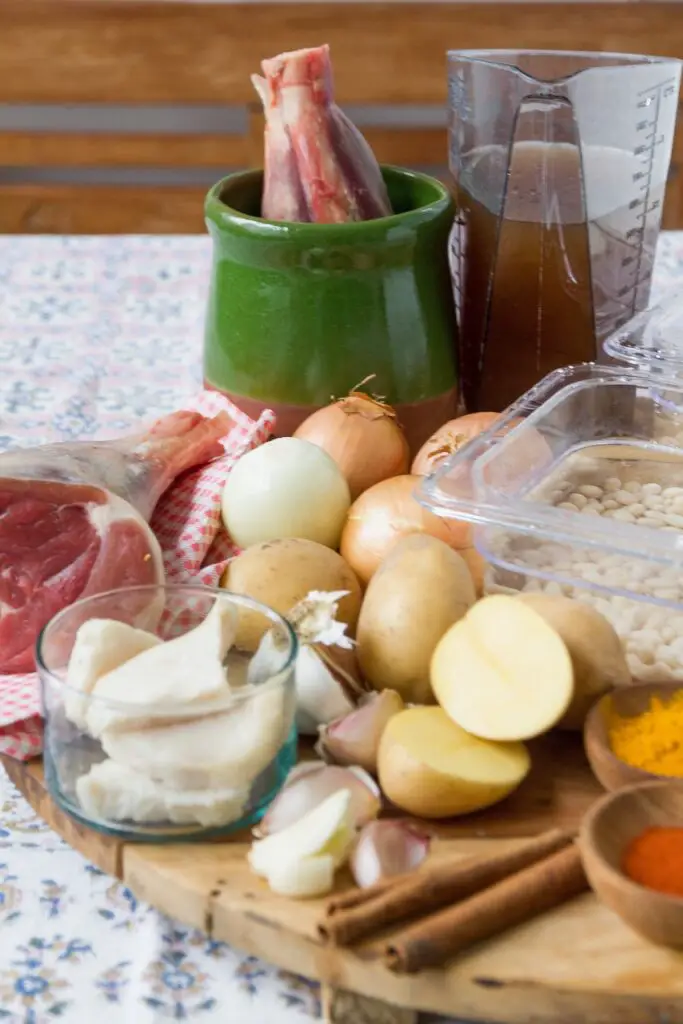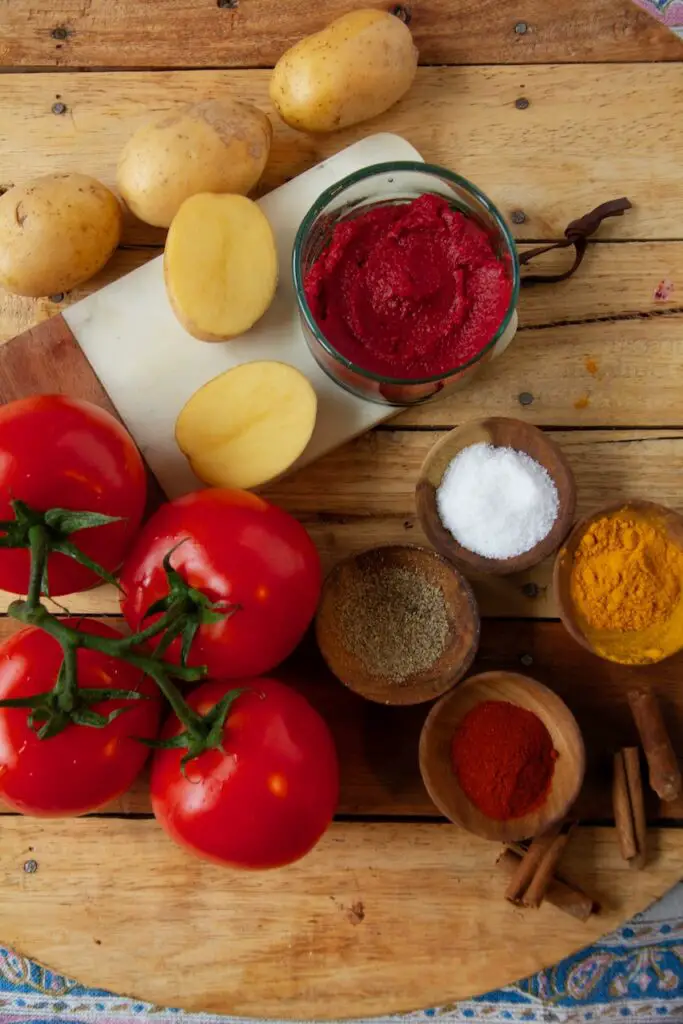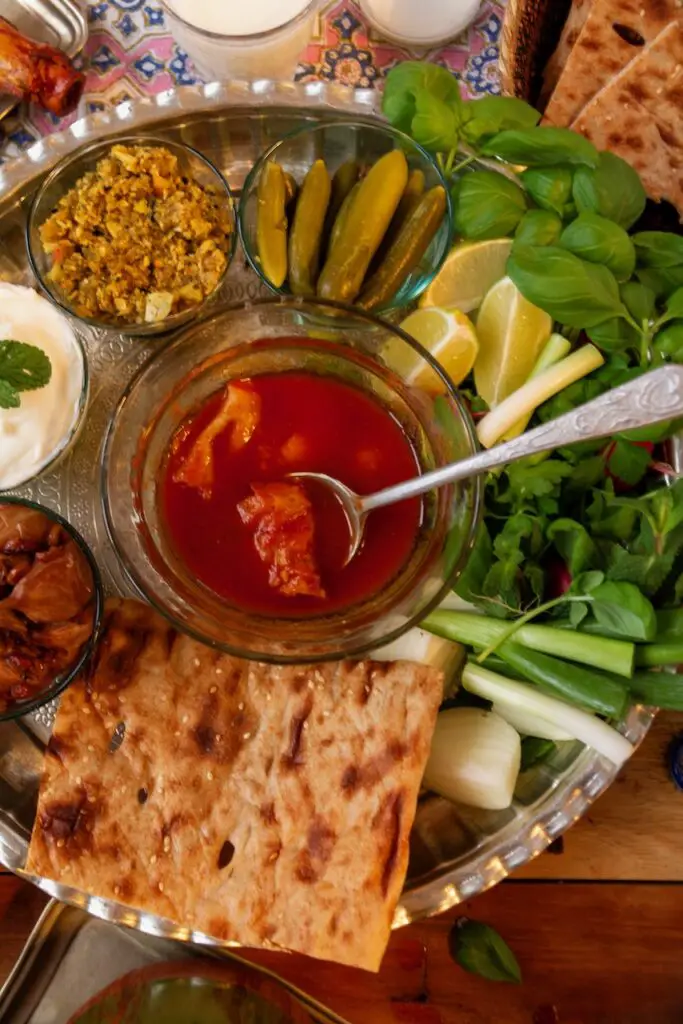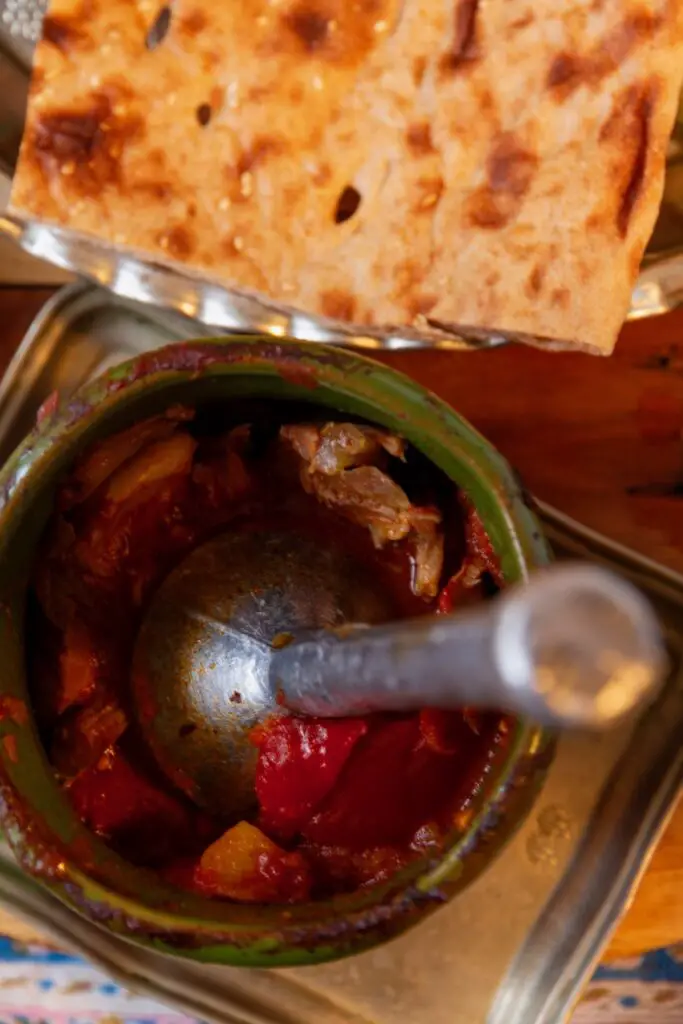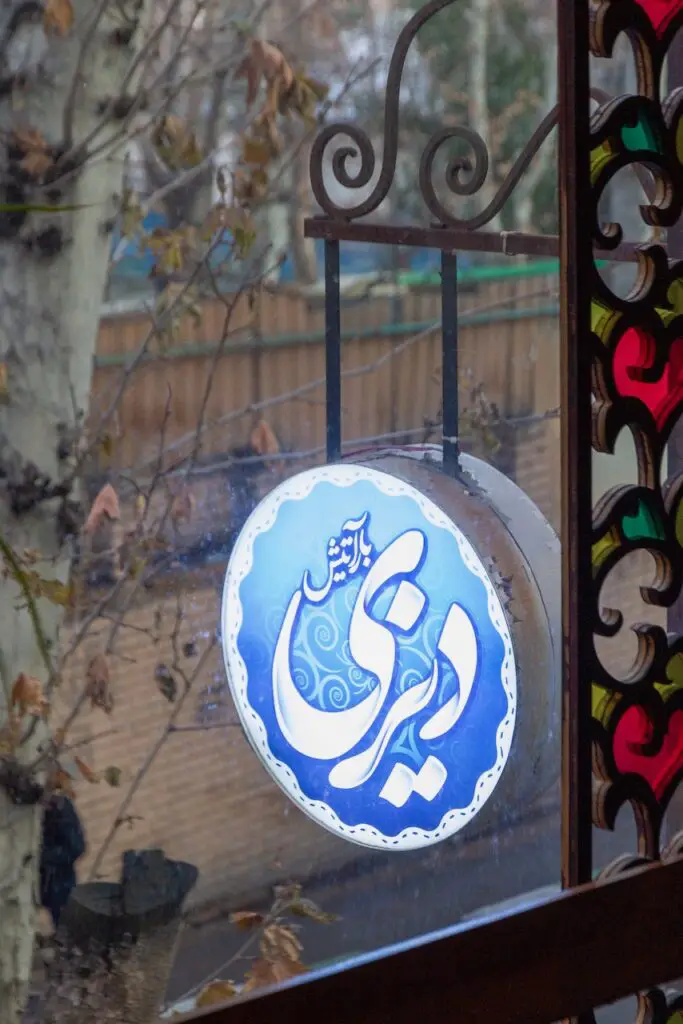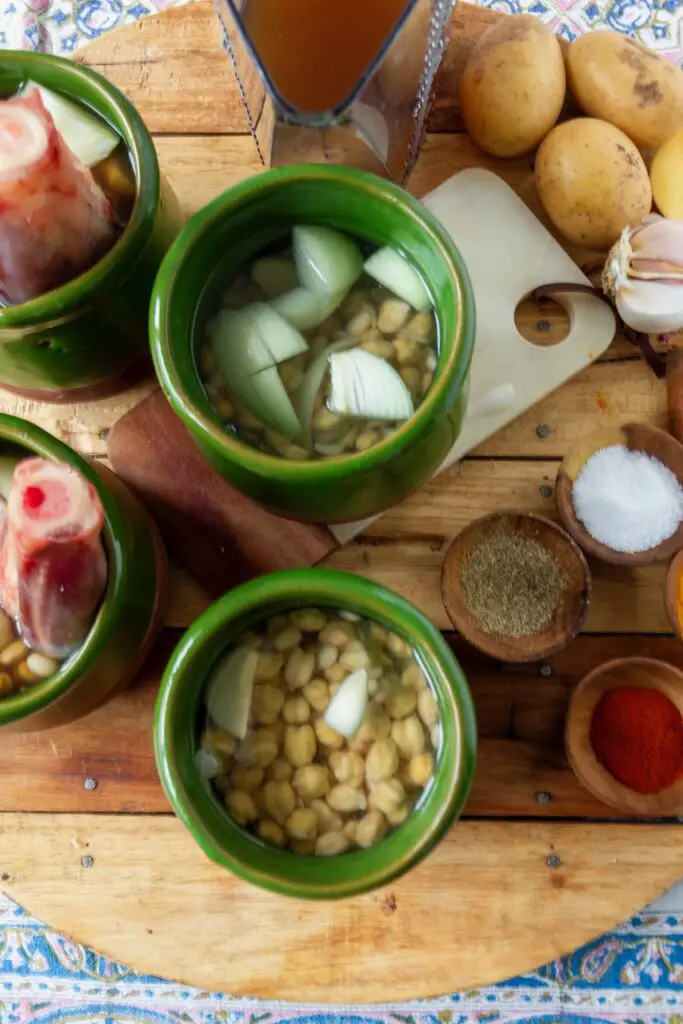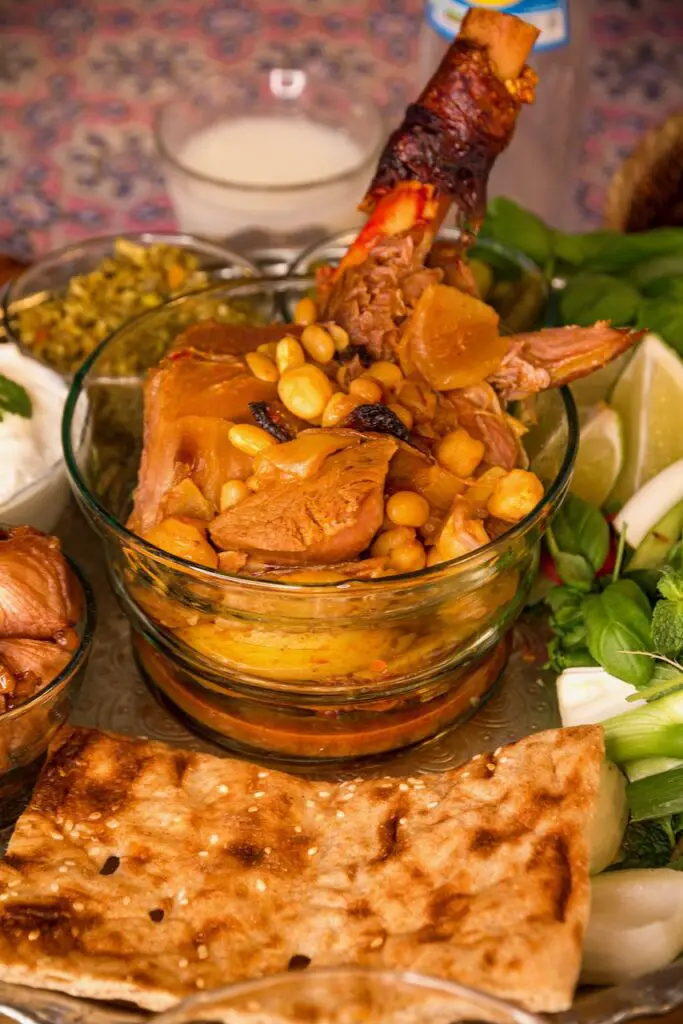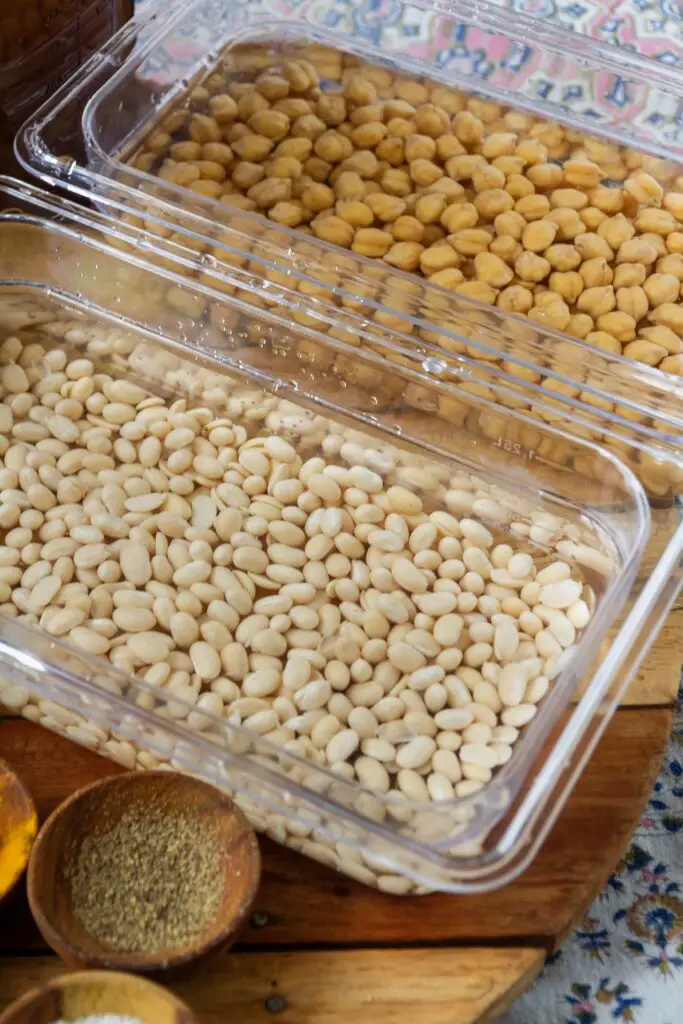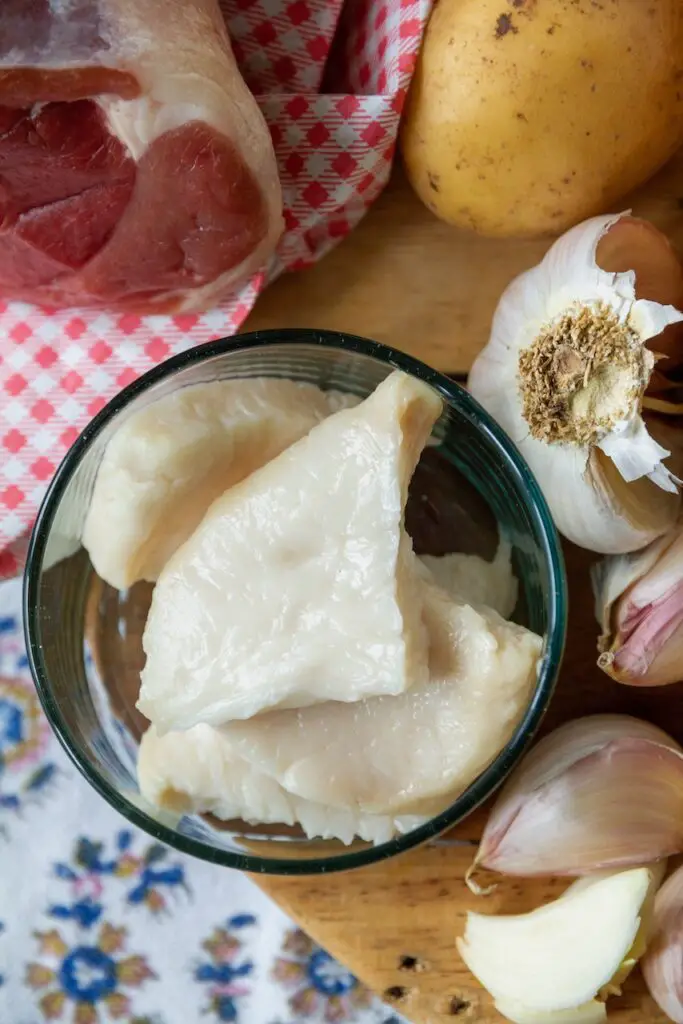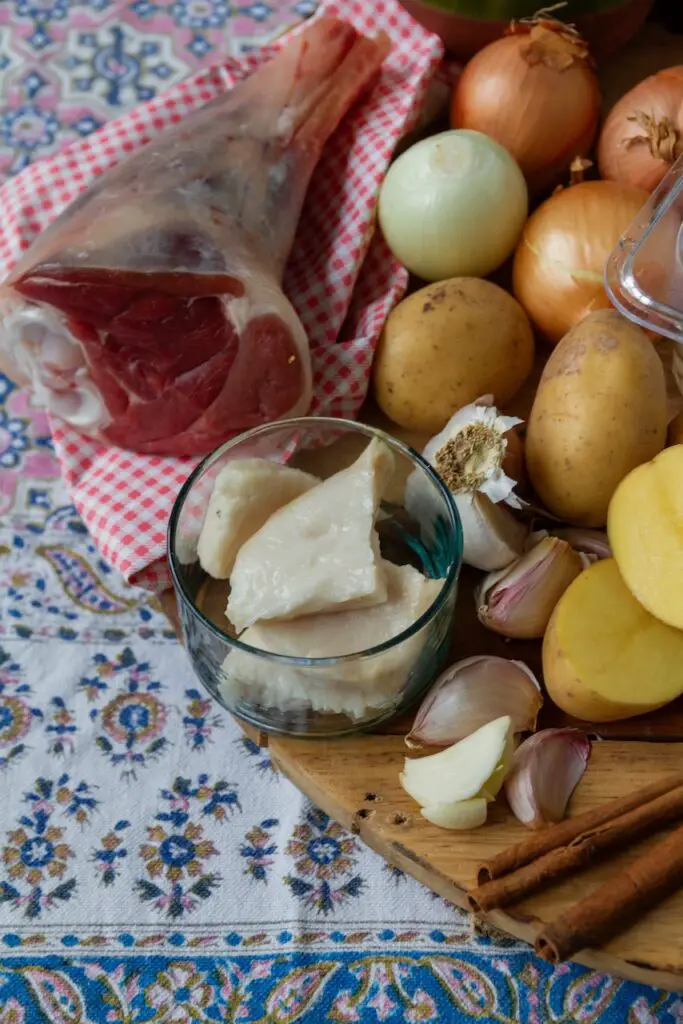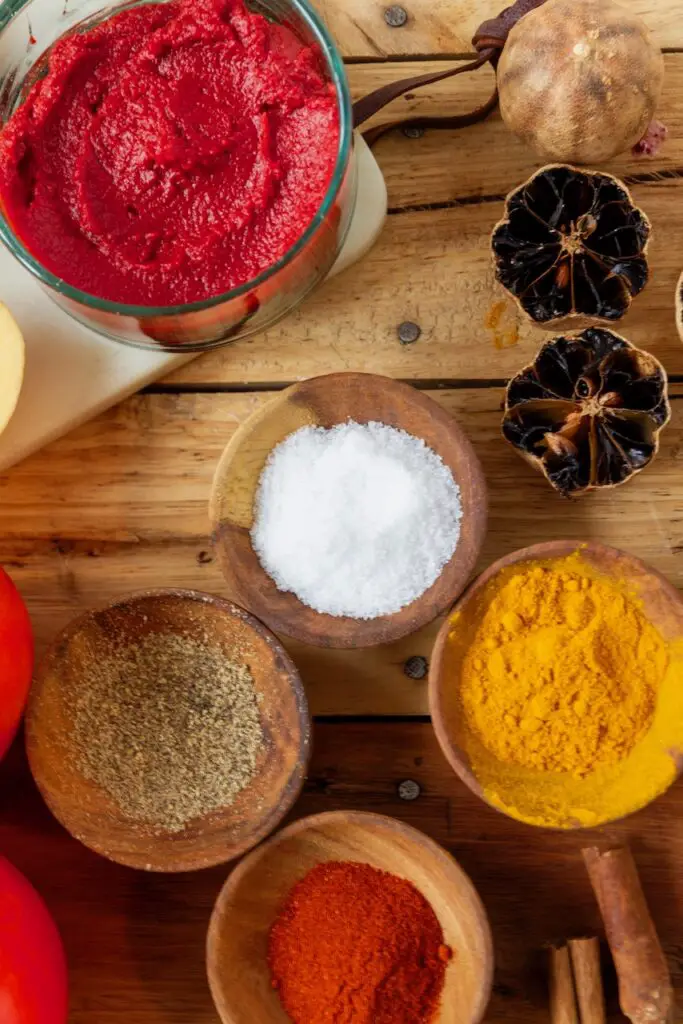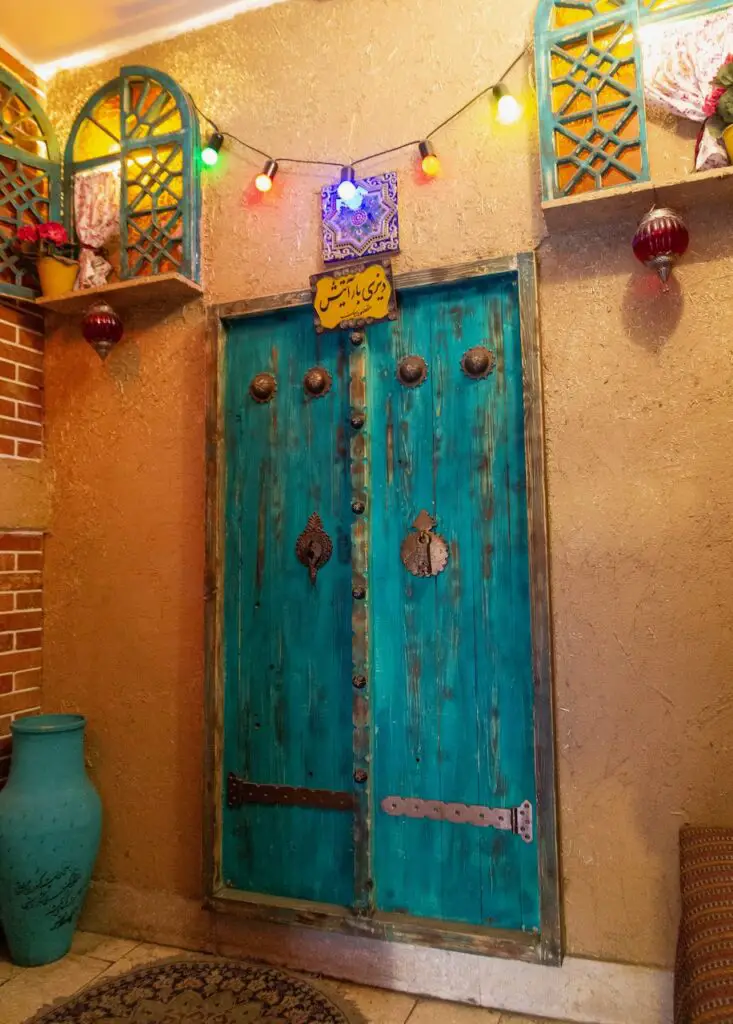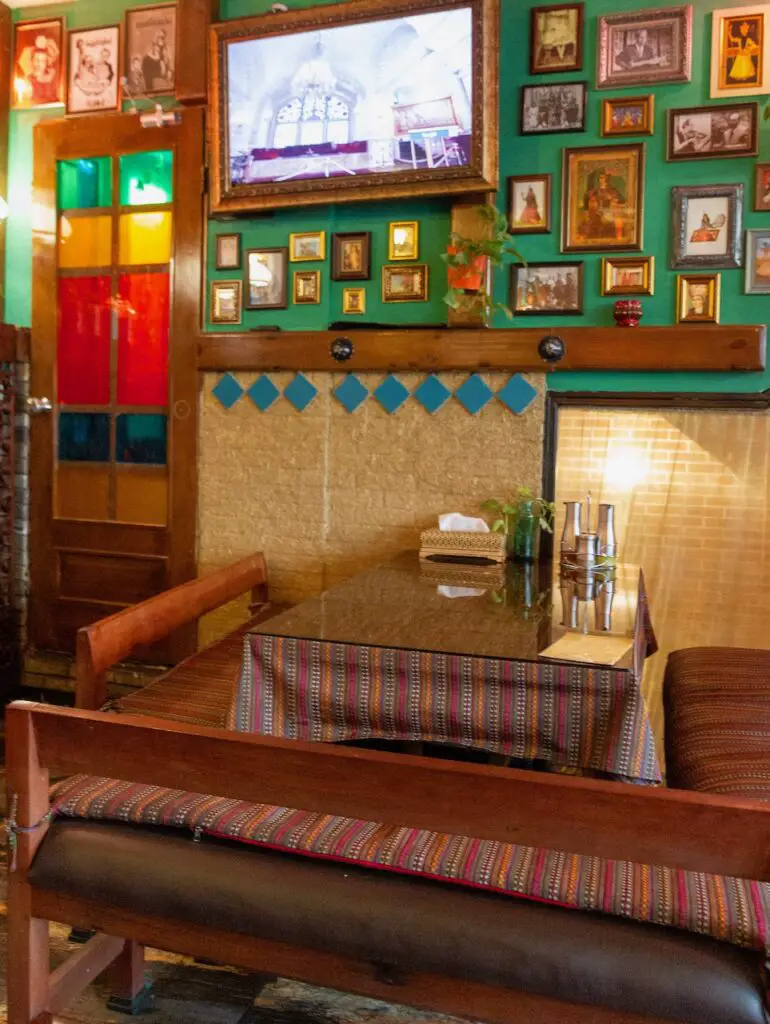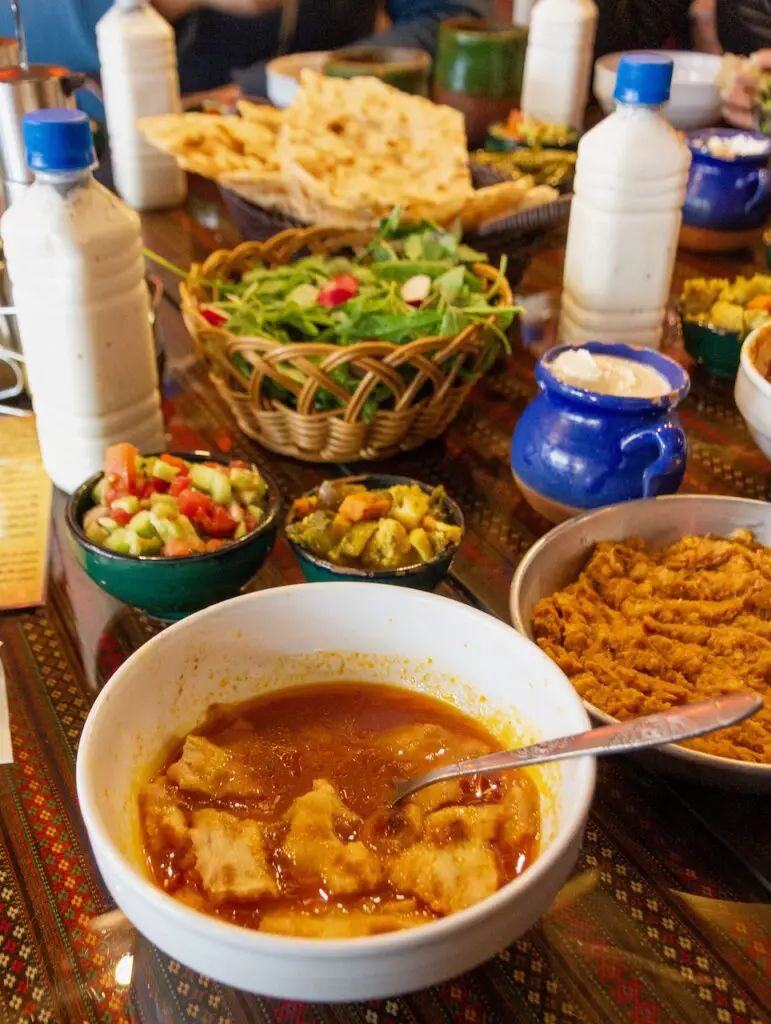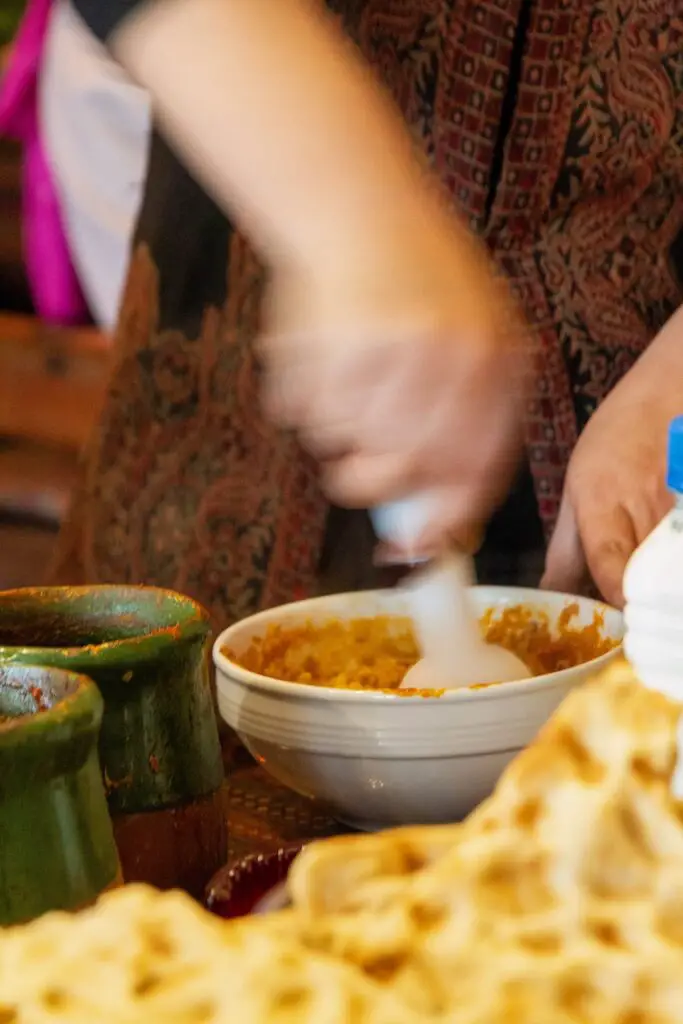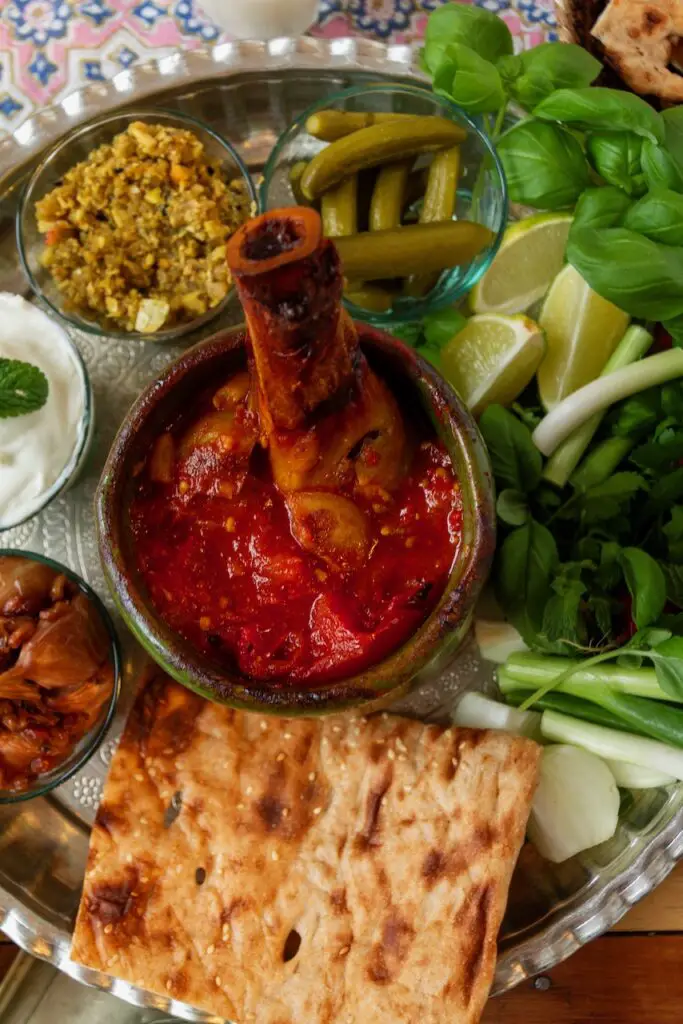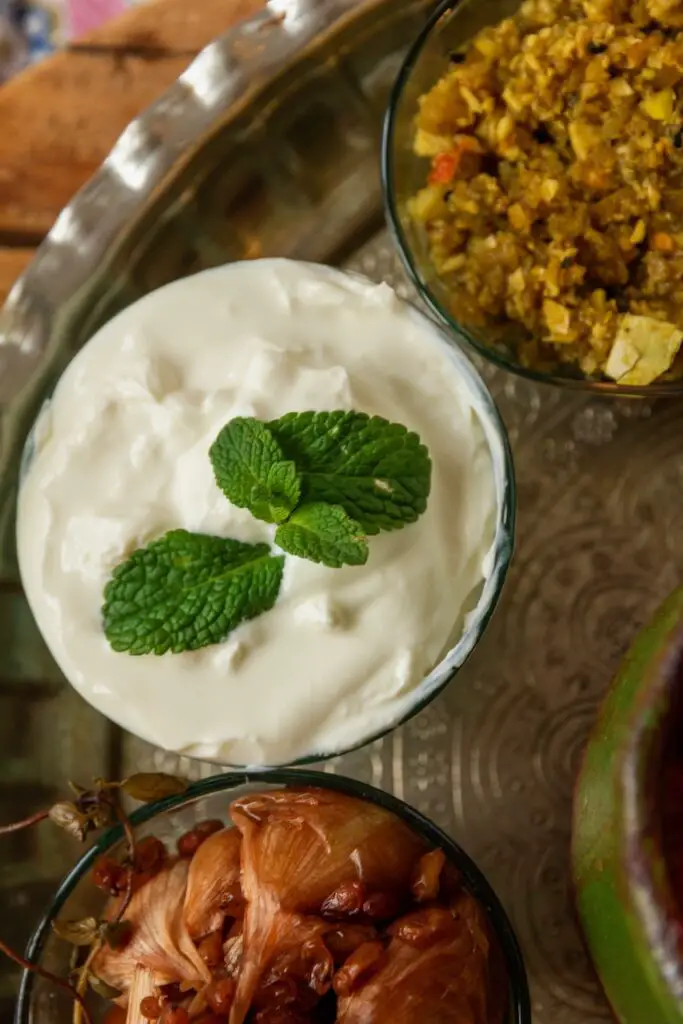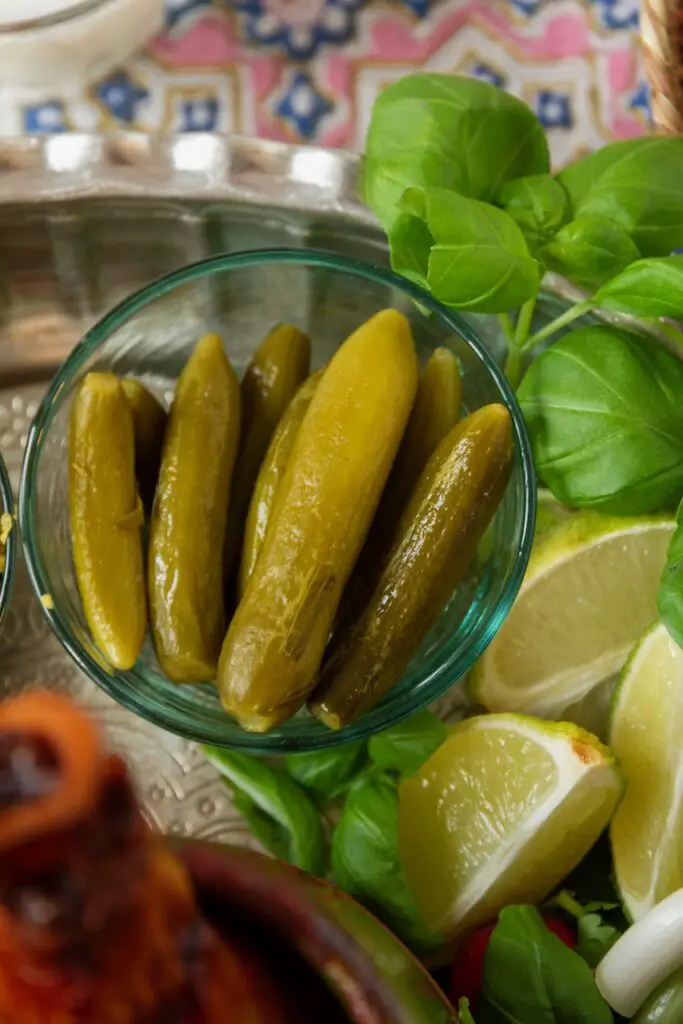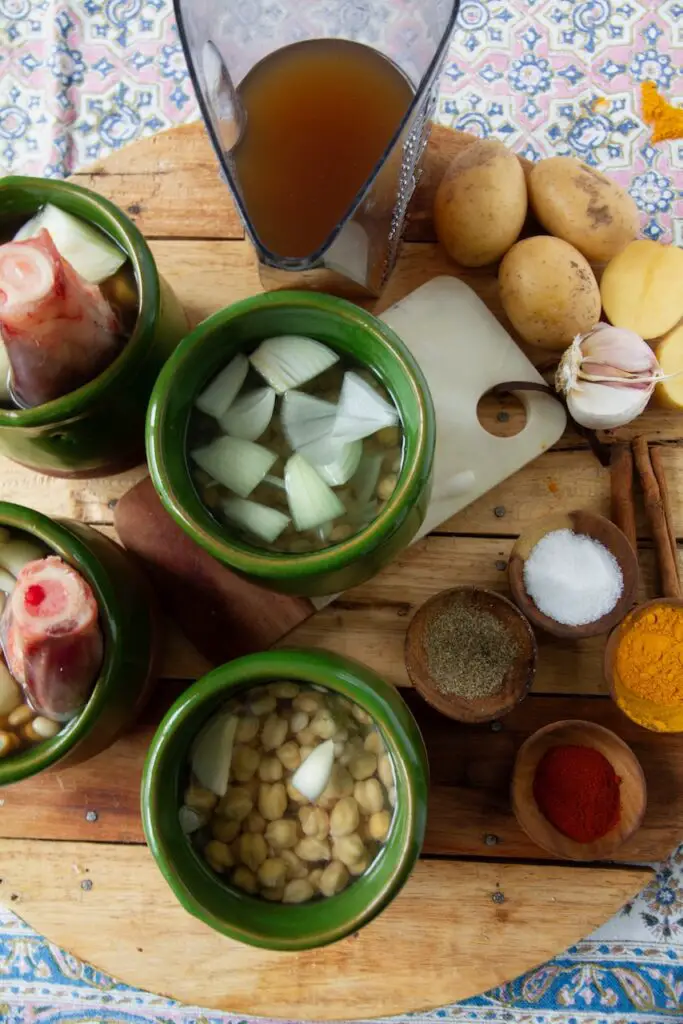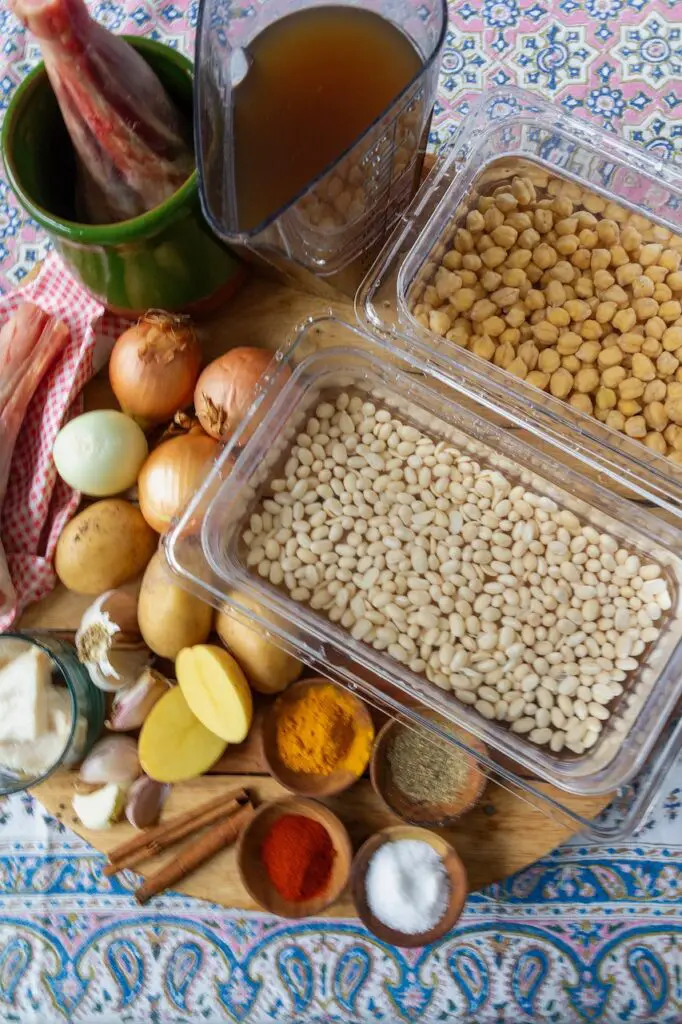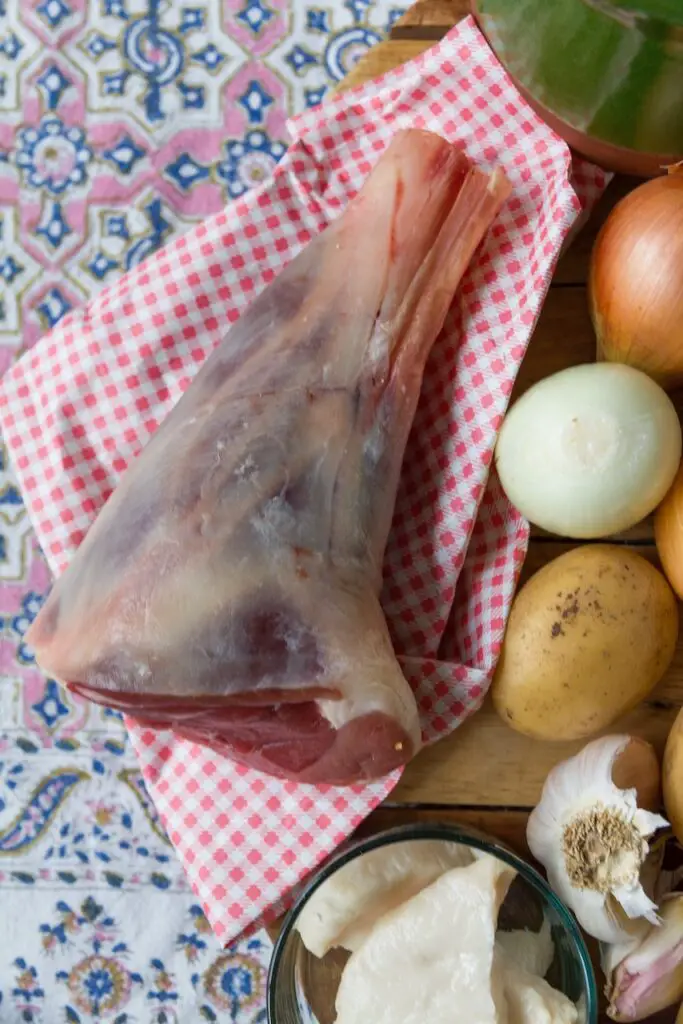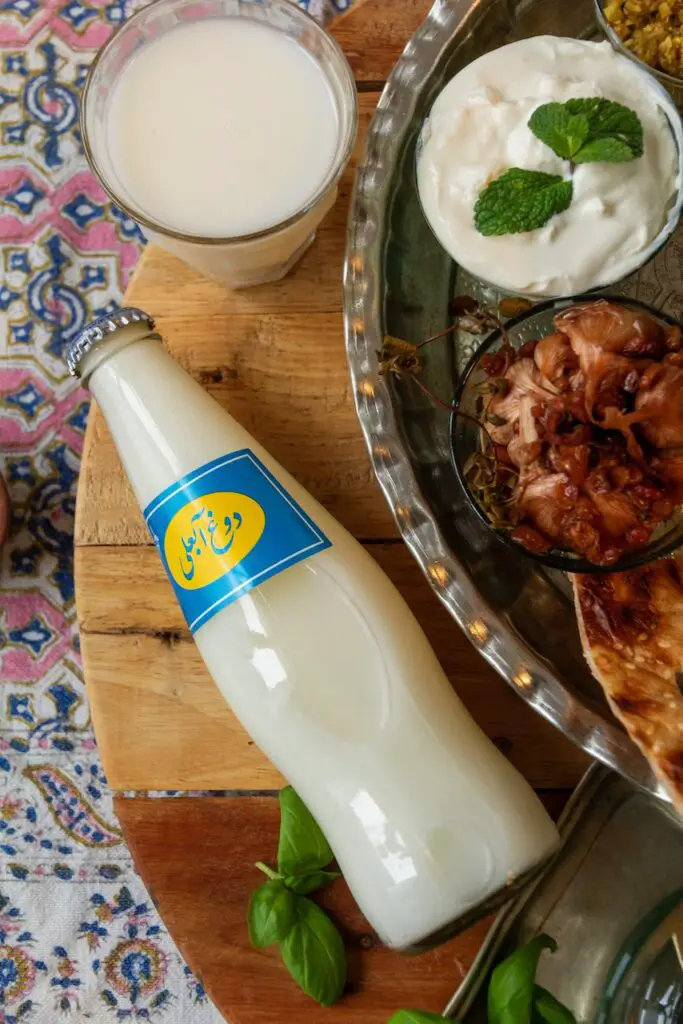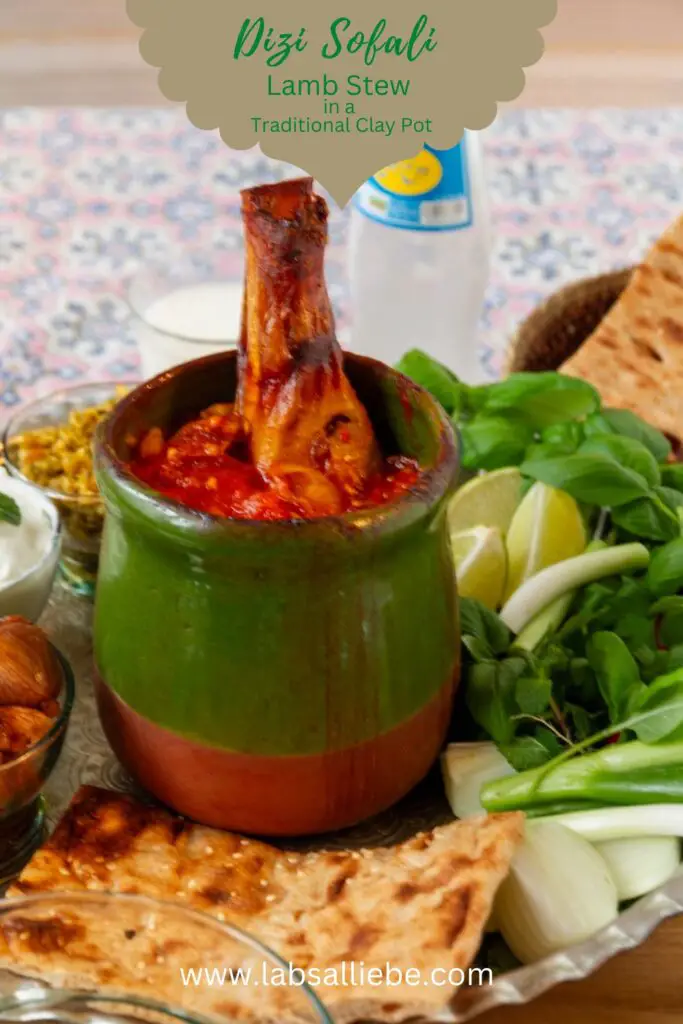Have you ever heard of Dizi Sofali – Persian Lamb Stew in a Traditional Clay Pot? This Persian lamb stew, cooked in a clay pot, is more than just a dish – it’s a true experience! Dizi isn’t simply a meal; it evokes feelings and nostalgic memories of childhood, family, and special moments. If you want to bring the taste of Persia to your table, Dizi is the perfect way to start!
DIZI OR ABGOOSHT?
Traditionally, Abgoosht is cooked in special clay pots called Dizi, which give the dish its unique flavor. But here’s the thing – “Dizi” only refers to the pot, not the dish itself. So, if you don’t have a Dizi clay pot, no worries! You can still make Abgoosht in a regular pot, and it will taste just as delicious. Want to bring the magic of Persian cuisine into your own kitchen? Here’s my recipe – give it a try and enjoy!
DIZI SOFALI – PERSIAN LAMB STEW IN A CLAY POT
Dizi Sofali – Persian Lamb Stew in a Traditional Clay Pot tells a story of old bazaars filled with exotic scents, of simple recipes passed down through generations, and of the love poured into every spoonful. This dish feels like a warm hug, reminding us of the beauty of tradition and togetherness.
It takes me back to family dinners, with a table full of fresh sides, laughter, stories, and that unforgettable aroma from the kitchen. Every time I cook Dizi, it feels like bringing a piece of my childhood back to life – filling my home with warmth and memories. Dizi has a special magic – it brings people together. And that’s exactly what I want to share with you today: the story, the flavors, and the secrets of this incredible dish.
WHAT MAKES DIZI SO SPECIAL?
Dizi Sofali – Persian Lamb Stew in a Traditional Clay Pot isn’t just a stew – it’s an experience, a ritual, a feast for the senses. What makes this traditional dish so unique isn’t just the way it’s cooked but also how it’s enjoyed.
The magic starts in the cooking process. Traditionally, Dizi is prepared in special clay pots called Dizi Sofali* or Dizi Sanghi* (stone pots). You’ll also need a Gooshtkoob* (a special masher).
Slow cooking in these pots brings out the rich flavors of the ingredients in a way that’s hard to match. Tender lamb, Donbeh (delicious lamb fat that adds depth), chickpeas, beans, potatoes, tomatoes, onions, garlic, and a blend of aromatic spices all simmer together to create something truly special.
The result? A perfect harmony of taste and texture that’s simply irresistible. But the real magic of Dizi doesn’t stop there – it’s just getting started. This dish is eaten in two steps, and that’s what makes it so charming.
HOW DO YOU EAT DIZI?
Step One: Pour the rich, flavorful broth—called Ab-e Goosht—into a separate bowl. Tear fresh Sangak bread* into small pieces and dip them into the steaming broth. Then, sip the broth and enjoy the soaked bread. The taste? Simply heavenly—spiced, hearty, and incredibly comforting.
Step Two: Using a masher, crush the solid ingredients in the clay pot into a creamy mixture called Goosht-e Koobideh or Koofteh Goosht. Spread this onto a piece of Sangak bread and top it with fresh sides (Chashni) like spicy onions, crunchy scallions, basil leaves, or pickled vegetables (Torshi Liteh) and pickled garlic (Sir Torshi).
For the perfect finishing touch, add a spoonful of Mast-e Chekideh—a thick, strained yogurt—and enjoy it with a cool glass of Dugh, a Persian yogurt drink with a hint of mint that balances the bold flavors of Dizi beautifully.
A HISTORY YOU CAN TASTE
Dizi has a long tradition and is deeply rooted in Persian culture, making it one of the oldest dishes in Iranian cuisine. There are many stories and legends about its origins, preparation, and key ingredients. Some sources believe the dish was first created by Azerbaijanis, while others say it was invented by Ali Naghi Khan, a famous chef, making it a traditional dish of Tehran.
NASER AL-DIN SHAH AND THE ROYAL TASTE
Some stories say that the famous Persian king Naser al-Din Shah was known for his love of fine food. Always searching for new dishes and unique flavors, he put pressure on the royal kitchen to constantly create fresh and refined meals. As a result, many variations of Abgoosht were developed, often prepared in the king’s summer residences with fresh lamb and aromatic herbs.
DIZI IN TEHRAN – THE BIRTH OF A CULTURE
The dish’s popularity soon spread beyond the royal court and became a staple among the people. It was the perfect meal for the working class—hearty, nutritious, and easy to prepare. A turning point in Abgoosht’s history was its arrival in the bustling markets of Tehran.
In the old Iranian teahouses, travelers, merchants, and workers would gather to enjoy Dizi and share stories. It was the ideal meal—affordable, flavorful, and often prepared in large portions for multiple people. Strangers sat together at one table, and ate from the same pot. This was rare at the time and created a unique atmosphere of togetherness and connection.
THE MEANING OF “PAYE” IN CONNECTION WITH DIZI
To fill their tables, street vendors in Tehran would often call out: “Looking for a Paye for Abgoosht!” (Paye means “companion” or “supporter”). Solo diners would join others to share a meal, turning strangers into dining partners.
Over time, Paye became a popular term that’s still used today. If someone asks you, “Are you Paye for a meal?”, they’re calling back to this beautiful tradition of togetherness.
For workers and travelers back then, Dizi was an affordable way to satisfy their hunger—while enjoying good company. But its meaning went far beyond just food. It became a symbol of community and hospitality, of coming together and sharing, even with strangers. So, are you Paye for a Dizii?
ABGOOSHT/DIZI VARIATIONS
Depending on the region and season, Abgoosht comes in many different versions. Here are just a few of them:
- Abgoosht-e Sadeh (Simple Abgoosht): The classic version made with only the essential ingredients, without any extras.
- Abgoosht-e Bozbash: Made with lamb and a variety of seasonal vegetables and fruits.
- Abgoosht-e Beh (Quince Abgoosht): Features quince for a unique, slightly tangy flavor.
- Abgoosht-e Sib (Apple Abgoosht): Uses apples or potatoes as a main ingredient.
- Abgoosht-e Aloo (Plum Abgoosht): Includes plums or apricots, adding a sweet and sour twist.
- Abgoosht-e Bademjan (Eggplant Abgoosht): Made with eggplants, giving the dish a rich, velvety texture.
- Abgoosht-e Kashk (Whey Abgoosht): Contains Kashk (dried yogurt), adding a slightly tangy depth of flavor.
Each variation brings its own special touch, making Abgoosht/ Dizi a dish full of endless possibilities!
MY TIPS FOR THE PERFECT DIZI
Making Dizi is easier than you think—you don’t need exotic ingredients, just a few key tricks to take it to the next level:
- Soak chickpeas and beans overnight – This helps them expand and shortens the cooking time.
- Use the right meat – Lamb with bones is a must! The bones add depth to the broth that no spice can replace. I prefer lamb shank with a bit of lamb fat.
- Boost the flavor – Instead of water, use lamb stock for an even richer taste
- .Don’t skip dried limes – Known as Limoo Amani, these little gems add a slightly tangy, citrusy kick to the dish.
- Slow cooking is key – The longer Dizi simmers, the deeper the flavors. Some even let it cook overnight in the oven!
- Choose the right bread – Sangak bread is the best match. If you can’t find it, a
- Lavash, Taftoon, Barbari or a good rustic sourdough works too.
Follow these tips, and your Dizi will be absolutely amazing!
WHERE TO EAT DIZI IN TEHRAN AND FRANKFURT
If you’re curious to try Dizi in its authentic form, here are some recommendations:
In Tehran:
- Dizi Sara: Located in downtown Tehran, this restaurant exclusively serves Dizi for lunch. It’s known for its authentic ambiance and delicious Dizi. Due to its popularity, especially on weekends, you might have to wait, but it’s worth it.
- Dizi Bar Atish: Situated near the Tajrish Bazaar, this spot offers a delightful Dizi experience.
- Tilit Restaurant offers variations of Dizi, also vegetarian Dizi
- Zamin Vegan Restaurant, is a vegan Restaurant where you can enjoy a vegan Dizi.
In the Frankfurt Area:
- Dayana Restaurant: Located at Mainberg 7, 65929 Frankfurt am Main, this restaurant offers Traditional Persian Dizi.
DIZI NIGHT – A DISH THAT BRINGS PEOPLE TOGETHER
Dizi (or Abgoosht) is more than just a meal—it’s a symbol of tradition, community, and warmth in Iranian culture. Whether in local Dizi houses or at family gatherings, this dish is always an excuse to get together and enjoy a simple yet incredibly comforting meal. Maybe you want to try it yourself and host your own Dizi night with your loved ones? Imagine the smell of Dizi Sofali – Persian Lamb Stew in a Traditional Clay Pot filling your kitchen, and the moment you take that first bite. Can you feel the excitement? If so, go ahead—dive into the world of Dizi Sofali – Persian Lamb Stew in a Traditional Clay Pot!
By the way, you can find more recipes and stories from Persian cuisine on my website. Who knows, your next favorite dish might just be waiting for you right here.
DIZI INGREDIENTS (per clay pot)
3 tbsp white beans*, soaked overnight
3 tbsp chickpeas*, soaked overnight
1 lamb shank
50 g of lamb fat
1 onion, peeled and whole
1 garlic clove, peeled and whole
250ml lamb stock (pre-cooked) or water as an alternative
1 tsp turmeric*
Pepper
1 tbsp tomato paste
1 tomato
1 potato
1 dried lime (Limoo Amani)*, halved
Salt
SIDE DISH INGREDIENTS
Fresh basil
Onion, quartered, or
Spring onions (my favorite)
Torshi Liteh – pickled vegetables
Khiyar Shoor – pickled salt cucumbers
Mast-e Chekideh – thick yogurt
Bitter orange (Narendj) or limes
DIZI PREPARATION
Preheat the oven to 200°C.
Soak the white beans and chickpeas overnight.
Place the lamb shank, lamb fat, white beans, and chickpeas into the clay pot, then cover with cold lamb stock or water.
Put the pot into the preheated oven. Once it starts boiling, skim off the foam and season with turmeric, pepper, cinnamon stick, and tomato paste.
After 1 ½ hours, add the tomato, potato, soaked dried lime (Limoo Amani), and salt. Continue cooking for another hour.
Your Dizi is ready to serve!
SERVING DIZI
Place the piece of lamb fat in a bowl and mash it, adding some of the broth to loosen it up.
Tear the Sangak bread into pieces and dip it into the soup.
For the rest of the ingredients, you can either leave them whole and enjoy with the bread, or use a Gooshtkoob (meat tenderizer) to mash them in the pot.
Take a spoonful of the mashed mixture and place it on a piece of Sangak bread.
Top with onions, spring onions, or fresh basil. Enjoy!
Serve with fresh Basil, onions or spring onions, bitter orange or limes, Sir Torshi (pickled garlic), Torshi Liteh (pickled vegetables), Khiyar Shoor (pickled salt cucumbers), and Mast-e Chekideh (Labneh, a thick yogurt). Enjoy your Dizi feast!
BEFARMAYID!
Susan
The items marked with * are affiliate links, referral links. If you buy through this link, I get a small commission. The price stays the same for you and you can easily support my efforts. A big thank you ♥

Dizi Sofali – Persian Lamb Stew in a Traditional Clay Pot
Traditionally, Abgoosht is cooked in special clay pots called Dizi, which give the dish its unique flavor.
Ingredients
DIZI INGREDIENTS per clay pot
- 3 tbsp white beans soaked overnight
- 3 tbsp chickpeas soaked overnight
- 1 lamb shank
- 50 g of lamb fat
- 1 onion peeled and whole
- 1 clove garlic peeled and whole
- 250 ml lamb stock pre-cooked or water as an alternative
- 1 tsp turmeric
- 1 Ceylon cinnamon stick
- Pepper
- 1 tbsp tomato paste
- 1 tomato
- 1 potato
- 1 dried lime Limoo Amani*, halved
- Salt
SIDE DISH INGREDIENTS
- Sangak bread
- Fresh basil
- Onion quartered, or
- Spring onions my favorite
- Sir Torshi – pickled garlic
- Torshi Liteh – sour pickled vegetables
- Khiyar Shoor – pickled salt cucumbers
- Mast-e Chekideh – thick yogurt
- Bitter orange Narendj or limes
Instructions
DIZI PREPARATION
-
Soak the white beans and chickpeas overnight.
-
Preheat the oven to 200°C.
-
Place the lamb shank, lamb fat, white beans, and chickpeas into the clay pot, then cover with cold lamb stock or water.
-
Place the pot into the preheated oven.
-
Once it starts boiling, skim off the foam and season with turmeric, pepper, cinnamon stick, and tomato paste.
-
After 1 ½ hours, add the tomato, potato, dried lime (Limoo Amani), and salt.
-
Continue cooking for another hour.
-
Your Dizi is ready to serve!
SERVING DIZI
-
Place the piece of lamb fat in a bowl and mash it, adding some of the broth to loosen it up.
-
Tear the Sangak bread into pieces and dip it into the soup.
-
For the rest of the ingredients, you can either leave them whole and enjoy with the bread,
-
or use a Gooshtkoob (meat tenderizer) to mash them in the pot.
-
Take a spoonful of the mashed mixture and place it on a piece of Sangak bread.
-
Top with onions, spring onions, or fresh basil. Enjoy!
Recipe Notes
Serve with fresh Basil, onions or spring onions, bitter orange or limes, Sir Torshi (pickled garlic), Torshi Liteh (sour pickled vegetables), Khiyar Shoor (pickled salt cucumbers), and Mast-e Chekideh (Labneh, a thick yogurt). Enjoy your Dizi feast!
Save the recipe for later on Pinterest!
Have you cooked this or maybe another delicious recipe of mine? Feel free to leave me a comment below. If you tag your picture on Instagram with @labsalliebe and use the hashtag #labsalliebe, I won’t miss a post and will be happy to leave you a comment as well. Can’t wait to see your creations.
♥♥♥♥♥♥♥♥♥♥♥♥♥♥♥♥♥♥♥♥♥♥♥♥♥♥♥♥♥♥♥♥
This website is created by me in my leisure under proper use of coffee 🙂 If you like my posts I would be happy if you donate me one or a few cups of coffee!
Donate an amount of your choice via Paypal.
♥♥♥♥♥♥♥♥♥♥♥♥♥♥♥♥♥♥♥♥♥♥♥♥♥♥♥♥♥♥♥♥
Sign up for my newsletter, and I’ll email you my latest recipes, travel reports, and trends once or maybe 2x a week for free.

